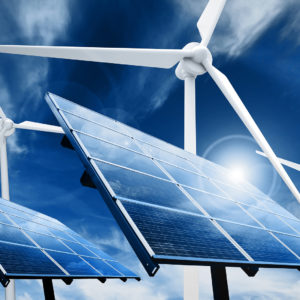We have entered a century that will determine the course of human existence.
Already we’re witnessing the climate future scientists have been warning about for years. We’ve seen devastating wildfires, droughts, hurricanes — and even freezing temperatures in Texas, caused ironically by warmer temperatures distorting jet stream winds.
But the Texas freeze showed more than a need to just transition off fossil fuels. The state’s generation failures, blackouts, and horrendous utility price gouging during the freeze show why we must also rethink who controls our electric grids.
We must work towards a resilient grid, while changing our perspective on energy — from a product designed to make a profit into a basic human right.
The Biden administration understands the urgency around climate. Biden and Harris campaigned on a climate plan calling for a “100 percent clean energy economy” and “net-zero emissions no later than 2050,” along with pledges to boost climate-resilient infrastructure and take action against polluters.
That’s bolder than past administrations and certainly better than the last one. But it leaves open a crucial question: Who will control and own the new clean energy infrastructure in the United States?
A lot depends on the answer. Take my home state for example.
In 2018, New Mexico passed landmark legislation to get the state’s energy sector to net-zero by 2045. Pushing the energy sector to adopt more clean energy is a good thing. But it’s also opening the door for outside corporations to come in, take ownership of, and profit off New Mexico’s sun and wind — just as they did with oil and gas before.
Now, in central New Mexico, Pattern Energy is building the largest wind farm ever constructed in North America. The 1,000 MW farm is designed to produce at least 3.06B kWh in a year. Assuming the company sells that power at the national average of $0.02/kWh, that means the new farm will generate some $61 million worth of electricity a year.
That money will mostly leave New Mexico, a poor state where many struggle to pay power bills, and go to the San Francisco-based company that owns the wind farm.
This isn’t unique to New Mexico — it happens wherever corporations own energy. In fossil fuel-reliant Texas, investor-owned utilities charged consumers thousands of dollars even as blackouts roiled the state. But it will increase as there is a bigger push to transition to clean energy.
If we decarbonize our energy while leaving poor communities out of the wealth that energy generates, then we’re changing the players, not the game.
A future where energy is 100 percent publicly owned and not profit-driven isn’t such a pipe dream. Deep-red Nebraska has had publicly owned electricity — which consists of public utility companies, co-operatives, and power districts — since 1946.
This means that the state’s energy framework is not based on making a profit, but instead on providing power as a basic human right to its people. Whatever surplus they generate gets invested back into the community. Because of this structure, the state has lower utility bills than neighboring states.
Other publicly owned rural electric cooperatives dating back to the New Deal exist all across the country. These systems aren’t perfect, but they prove that public energy ownership is perfectly possible.
If we want our world to continue, at some point oil and gas economies will have to transition to clean renewable energy. The clean energy market can only continue to grow. But if “the market” leads our energy transition, entire communities will be left out from the wealth generation that will come with it.
Instead, imagine a future in which the people that consume energy are the primary owners and decision-makers of that energy infrastructure.
People wouldn’t have to pay high monthly utility bills to a company that exists to generate profit for its shareholders. Instead, they’d pay into a system they own — with lower rates, more democracy, and more local control. They’d have a voice in how to generate their power and what to do with it.
A future like this starts with public ownership of the coming clean energy infrastructure.

